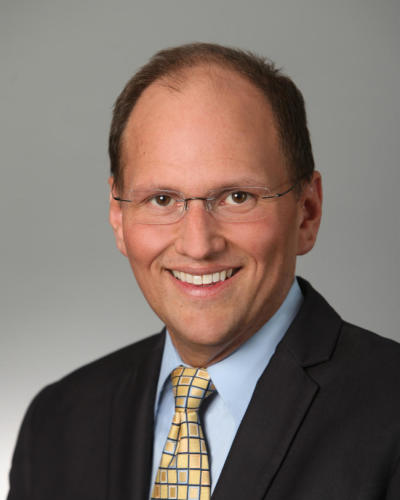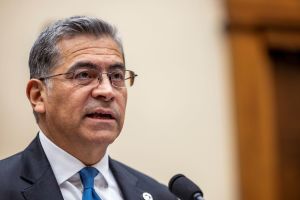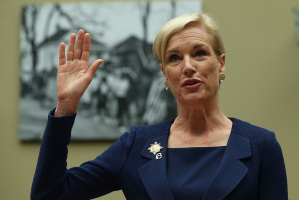Fired 'Feed The Children' CEO's Successor Explains His 'Calling;' Insists Aged Nonprofit's Future Is Bright
Kevin Hagan Replaces Founding President Larry Jones, Vows to Take Anti-Hunger Organization to New Heights

Feed The Children, a 35-year-old anti-hunger relief organization known for its work in the U.S. and abroad, as well as a scandalous fallout with founder Larry Jones, is banking on a new president and CEO to plot its course in attaining the lofty position of becoming "the world's most respected nonprofit brand with the greatest impact of any nonprofit in the world."
"I want people to know that when they come to us that they're contributing to the long-term self-sufficiency of people in need around the world," said Kevin Hagan, hired in April 2012 by Feed the Children as its new president and CEO.
"We begin by helping and assisting the child and then we expand our work to the family. Hopefully, by lifting the child and the family, we're beginning to engage in the community and lift the community," said Hagan of a new model the organization is using.
Instead of implementing one or two intervention programs, and then moving on to a new location to address other needs, Feed the Children plans to invest in targeted communities anywhere from 6-10 years, providing schools, feeding programs, water and sanitation programs, and whatever other necessities might be lacking.
"I am much more concerned about us doing exceptionally good work than I am about being all over the world and how many children we serve, because unfortunately a lot of organizations may have a big number but they're only doing one or two things over the course of a year to help those families and those children," said Hagan. "We really want to stick around and get them to the point where the community can sustain themselves."
Hagan, who describes his overall professional background as involving the "transformation of cultures and organizations," has headed up the conflict management program at USPS headquarters, served as director of ethics for the U.S. Food Corporation, and was most recently the COO of Virginia-based philanthropy organization Good360 (formerly Gifts In Kind International), which he says he helped recover from "significant financial trouble."
Feed the Children, ranked as No. 15 among the 50 largest U.S. charities by Forbes magazine, took a hit in 2009 during its legal battle against founder Larry Jones, accused in a counter-lawsuit of taking bribes, hoarding hard-core pornography in his office, favoring employed family members, and other misdeeds.
Jones was stripped in November 2009 of his 30-year position as president of Feed the Children after admitting to planting hidden microphones in executives' offices. The ousted charity founder sued Feed the Children, claiming that he was wrongfully fired and his character defamed, among other allegations. Jones and Feed the Children eventually settled, with the charity paying its founder and former CEO at least $800,000.
While it's reputation might have taken a hit, a 2013 nonprofit report indicates that Feed the Children substantially increased its revenue in the fiscal year ending June 2012, two months before it brought on a new leader, Hagan.
Below is a transcript of CP's phone interview with Hagan, who shares his vision for Feed the Children's future, misconceptions about poverty in the United States, and how his personal faith plays a role in the work he believes he is "called" to do.
CP: What is your primary objective in helming Feed the Children?
Hagan: Our primary objective is to build the world's most respected nonprofit brand with the greatest impact of any nonprofit in the world.
There are a lot of organizations that do a lot of work that we do, international relief and development work. We also work here in the United States, so there are lots of organizations that work in the United States, and that's the broader umbrella. Then there are many Christian organizations also that fall under that umbrella. I want us to be known for doing the absolute best work. I want people to know that when they come to us that they're contributing to the long-term self-sufficiency of people in need around the world.
In the last three years, we have completely revamped our international development model and we've introduced what we call child-focused community development program and the theory of this is that we're working initially with the children and then we know that if we can begin in the child's life — because there's one thing, there's sort of a truth that most people hold, and that is every parent wants a better life for their child than they had for themselves. So we begin by helping and assisting the child and then we expand our work to the family. Hopefully by lifting the child and the family, we're beginning to engage in the community and lift the community.
In our new model, we actually stick around for quite a while... What we are committing to doing in the new Feed the Children, is that we enter into a participatory process with the community and we'll agree to stick for around anywhere from 6-10 years depending on the need of the community. … Some may need schools, some may need feeding programs, some may need water and sanitation programs, some may need deworming, some may need everything. We work with the community to define what the development plan is to bring those people to a level of self-sufficiency.
If we go into communities and help start enterprises, we ask them to tithe 10 percent back to their community. If they're producing eggs, then 10 percent of the eggs need to be given to the feeding program at the school … We begin to build this culture of self-sufficiency in the community where they're also taking care of one another in addition to taking care of their family, so it's for the collective good.
It's a different model for Feed the Children, it's a new one for us in the last three years and we believe that it's really the future of the way to do this kind of development work. We intend to invest deeper in the communities where we are.
CP: What kind of work does Feed the Children do in the United States?
Hagan: Here in the United States, when people think of hunger in the U.S., they often don't believe it's an issue at all, but it really hits very close to home here in the U.S. The reality right now according to the latest statistics is that 1 in every 5 children in the United States faces hunger. They're living in an insecure household or have food insecurity. It really goes hand-in-hand with the poverty rate. … In 2012, there were about 46.5 million people who live in poverty in the U.S. … So when you look at that, that's about 15 percent of Americans overall [living] below the poverty line. So it is a real issue here, and food and security is a real issue and particularly among children.




























